Beth Kanell's Blog, page 24
July 29, 2012
Turning Students into History Detectives: Episode 1
Ever wondered how to light up your elementary classroom students for reading and learning about the past -- that is, about History? Maybe you've got a great textbook or series you want to introduce ... but the kids are sitting back and letting you do all the work. Here's a short podcast with a simple exercise that turns on the investigative side of most students. Let me know how you adapt it for the kids you care about.
Published on July 29, 2012 15:35
Finding the Personal in History
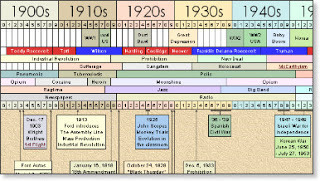 photo courtesy of annaWhether in a classroom or a community group, with youngsters or adults, when I talk about American history and the stories I write, I'm talking PERSONAL. A fascination with the timeline of history begins as we see our own lives pinned to the numbers. So that's where I like to start.
photo courtesy of annaWhether in a classroom or a community group, with youngsters or adults, when I talk about American history and the stories I write, I'm talking PERSONAL. A fascination with the timeline of history begins as we see our own lives pinned to the numbers. So that's where I like to start.1. Draw a number line of from the year 1900 up to this year. Mark your birth year and "today."
2. For adults, this next part is easy -- for youngsters, it may require a homework item "interviewing" parents at home or by e-mail or phone (be aware that 50% of American youngsters eventually live with both a birth parent AND an adult who is not their birth parent -- which means some other parent is "off site"). Mark the birth year and, if applicable, the marriage year and (if it's already happened) the death year for each of your parents, step-parents, and grandparents.
3. Make a list of the "big wars" from 1900 until today, with their years. If you need to do some research (or help a classroom do some research) on the actual years, that's great. You're becoming accurate! Be sure to include at least World War I, World War II, the Korean War, the Vietnam War, the first Gulf War, and your view of the most recent wars that America has participated in. Mark the years of the conflicts onto your timeline.
4. Pause and reflect: For each of the important family members on your timeline, connect the person with the "big history" of the nation's conflicts. Ask yourself: How was my father (grandfather) affected by the start of that conflict? What did my mother (grandmother) know about it? How did she or he cope with family changes taking place during that time? What happened to family finances there? What marriages or births were scheduled around those larger events? What "stories" of my personal history could I discover by asking family members or examining documents? What "stories" would I prefer to imagine and use as creative writing prompts?
5. Not writing a story or history yet? Add another layer to your timeline: Brainstorm the big inventions and social changes that took place during that time. Here are some examples: electricity arriving at homes in your town, invention of plastic, women's right to vote, Prohibition, the invention of "Social Security," x-ray machines, milking machines, home telephones, antibiotics, polio vaccines, artificial knees, co-ed colleges, the Civil Rights movement, assassinations of key political leaders, long-distance trucking, home refrigerators, personal computers, electric cars, space travel, movie theaters, cell phones. Now consider how each of those changes affected the people you've marked on your timeline.
You've now created a project that interweaves math, history, sociology, critical thinking, and, most of all, your own personal history. Do what professional historians do at this point: Photograph your timeline and place that photo in an archive of some kind.
Then make a plan: What do you want to know more about? What do you want to tell or write about from your discoveries? Your curiosity and your capacity to reflect and question will be your biggest assets in this project. And guess what -- we all have those two assets, and the more we use them, the stronger they become.
Published on July 29, 2012 05:50
July 13, 2012
Welcome, Guest Author Carole Shmurak: When Teens Solve a Murder (in 1865!) -- How the Matty Trescott Series Started
Under the name Carroll Thomas, Carole Shmurak co-authors (with Tom Ratliff) the "young adult" mystery series featuring dauntless Matty Trescott. But it wasn't clear at the beginning that this would even be a mystery series. Here's what happened. And thank you, Carole, for bringing us into the "story of the story." -- Beth
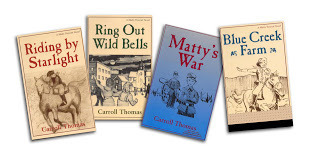 Ring Out Wild Bells was nominated for the Agatha Award for Best Young Adult Mystery of 2001, but it didn't start out as a mystery. My co-author Tom Ratliff and I had created a book we called Matty's War, about a sixteen year old girl who disguises herself as a boy and goes to fight for the Union army in the Civil War. It was based on a 1994 article in Smithsonian magazine about the 400 women who actually did this — a little-known part of American history.
Ring Out Wild Bells was nominated for the Agatha Award for Best Young Adult Mystery of 2001, but it didn't start out as a mystery. My co-author Tom Ratliff and I had created a book we called Matty's War, about a sixteen year old girl who disguises herself as a boy and goes to fight for the Union army in the Civil War. It was based on a 1994 article in Smithsonian magazine about the 400 women who actually did this — a little-known part of American history.After four years of writing and revising the manuscript and several years of receiving rejection letters from publishers, we were offered a contract by a small press — IF we would turn Matty's adventures into a three book series. We were able to write a prequel to Matty's War fairly quickly because we had already alluded to many events in Matty's life before the war, and now we just had to elaborate upon them; this became the book Blue Creek Farm, which describes Matty's life in Kansas just prior to, and at the start of, the War between the States.
But the sequel presented us with a challenge: with the Civil War over, we wondered how to bring excitement and drama to the story. Then the idea of a murder mystery came to us. As the Civil War ends, Matty's war experiences lead her to want to become a doctor. While she is working in a Boston hospital, a dying woman utters some strange last words to her, and Matty and her cousin Neely set off on a quest to find out the meaning of those words. In a world without modern forensics, our young protagonists take on and solve a most baffling murder case.
In 1865, there were two medical schools for women, one in Boston and one in Philadelphia. Since we lived in Connecticut, the Boston school was the easier one to research; the archives from New England Female Medical College reside in the library of Boston University. And the more we learned about Boston in the mid-1860s, the more we became intrigued by the many famous people who were living there or who were likely to be visiting friends there: the scientists Asa Gray, Lydia Shattuck, and Louis Agassiz, novelist Lydia Maria Child, abolitionists Abigail Kelley Foster and Maria Chapman, and women’s suffrage leader, Elizabeth Cady Stanton. So when Neely comes to spend time with Matty, the two young women get to attend a party at which many of the famous Bostonians and their friends are present. Matty gets to hear Stanton's views on women's education and Neely, a science student, eagerly listens to Gray and Agassiz arguing about Darwin and his theory of evolution.
Early on in the book, we have the two cousins discussing one of the important issues of the day: with the passage of the 15th Amendments giving black men the vote, many of the women who had been staunch abolitionists took on a new cause — getting the vote for women. Other feminist causes, like gaining the right to own property and getting the opportunity to attend college, became central to the plot of our book — and to the solution of the mystery.
About the title: Ring Out Wild Bells is a poem by Alfred, Lord Tennyson, published in 1850, which contains the line, “Ring out the old, ring in the new.” Our book begins with the ringing of church bells throughout the city of Hartford, Connecticut, announcing the end of the war, and it ends with the ringing of wedding bells, as one of our major characters is married. And much of the book deals with the changing of old ideas and customs to new ones: the end of slavery, the growing acceptance of the theory of evolution, the beginning of the fight to allow women to vote, and the emergence of higher education for women.
— Carole Shmurak, mystery author, who co-authors the Matty Trescott series under the pen name of Carroll Thomas.
Published on July 13, 2012 05:51
July 12, 2012
When Teens Solve a Murder Case - in 1865
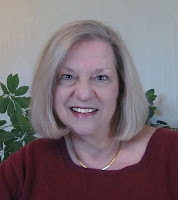
Stop in tomorrow to meet guest author Carole Shmurak, mystery author, who co-authors the Matty Trescott series under the pen name of Carroll Thomas. Her novel RING OUT WILD BELLS has a fascinating story behind it, as well as the narrative in it -- find out about the book's genesis, as well as the author's research and decisions.
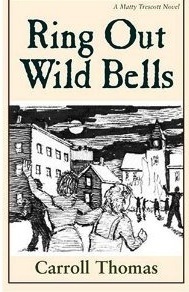
Published on July 12, 2012 18:26
July 5, 2012
Genealogy: A Mystery Tour in Progress
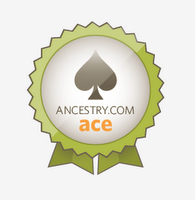 Yesterday's Independence Day celebration in our home included guests for supper whose political persuasions are often the opposite of ours. It makes some parts of the conversation challenging. Yet we treasure the work of respecting each other's views, supporting each other in our choices, and occasionally, usually with some humor, protesting each other's convictions. This is, for me, what being an American is often about: not just knowing our differences, but "having them to dinner."
Yesterday's Independence Day celebration in our home included guests for supper whose political persuasions are often the opposite of ours. It makes some parts of the conversation challenging. Yet we treasure the work of respecting each other's views, supporting each other in our choices, and occasionally, usually with some humor, protesting each other's convictions. This is, for me, what being an American is often about: not just knowing our differences, but "having them to dinner."It's hard work when it reaches inside and presses those inner buttons of who we are and why we choose to be that way. Right now, my quest for more family history fits weill with most of my close family members -- but rubs one or two of them wrong. I'm hoping those individuals will continue to tolerate my investigating, but I've learned enough from our politically different friends to realize that within family, too, there come moments when the assignment is simply: Stop talking about it. Relax. Enjoy the strawberry shortcake and the thunderstorms together.
Today, as I rotate back into work mode after three days of family, I took a few minutes to also catch up on the genealogy-related e-mails in my stack. There were a couple of them from Ancestry.com, where the slow labor of indexing all of the 1940 Census data, state by state, has now reached ten: CO, DE, DC, ME, NV, NY, OH, PA, TN, VT, VA. For me, that also meant 18 more documents that the Ancestry search engines thought might apply to my family tree -- and it turned out 17 of the 18 did indeed connect. Fun! I was also glad to find that New Hampshire is among the next set of records to be indexed, as that's where I'm looking for some farm connections from my mother's family, geared to that 1940 Census.
Because the novels I'm writing connect most of all with how difference is expressed and experienced in New England (usually from the point of view of a teen, most often a young woman), these history mysteries in my own family give me extra energy to keep exploring ... and keep writing.
Published on July 05, 2012 10:08
June 18, 2012
Time, Strawberries, and a Red Squirrel
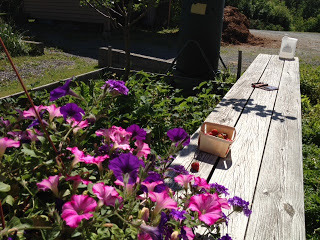
I see it's been a few weeks since I've added a post here. Some seasons are like that: I visited my sons and in another state my sister, got the vegetable garden planted, hauled a hundred wheelbarrows of shredded bark to dress the flower gardens and the new hedge line, and more. But I'm back in gear.
Last weekend I stood in a nicely shaded oxen shed at the Tunbridge Fairgrounds with eight or nine other authors of Vermont fiction, chatting with people who came to enjoy the Vermont History Expo. On Saturday morning I hurriedly picked some strawberries from the garden to leave on the table for my husband, who gets up a bit later, if time allows. Sunday morning, though, I didn't have time. But Sunday evening when I got home, before I even unloaded the car, I went to water the hanging basket of petunias next to the strawberry bed. Oddly, right in the middle of the "meditation bench" there, I saw a red strawberry. Could I have dropped it there on Saturday? It didn't seem likely. I was so tired that I just shrugged and left it there, figuring I'd catch up with the strawberries on Monday morning (today).
When I got up today, I went to the top of our office stairs, as I always do, to sit out in the fresh air and be silent for a few moments, remembering what Life is for. The stairs lead down to the meditation bench and the berry bed. As I opened my eyes after my pause, a flash of movement on the bench caught my eye! I stayed perfectly still, and realized a bushy-tailed red squirrel was there. A moment later, the squirrel ran away from the bench, toward the other side of the yard -- with the strawberry neatly held in his or her mouth.
What should I believe? That the squirrel has been carefully pilfering from the garden, and accidentally left a berry behind one night, and came back to retrieve it? I am amazed!
Of course, we are already sharing the garden with the robins nesting under the steps, and the catbirds and wrens, and I know the crows come peck holes in the ripest berries. To add a squirrel family as well seems a bit of a strain on the breakfast harvest for my husband.
So, with regret, I fastened the nylon "bird net" over the berry bed just now.
But I don't want the squirrels to have hurt feelings. So every single "rejected" berry from today's picking -- the ones the crows tasted or the ants nibbled -- is now lined up just outside the netted garden, on the grass. Red squirrel, come back. We are in this together, your family and mine.
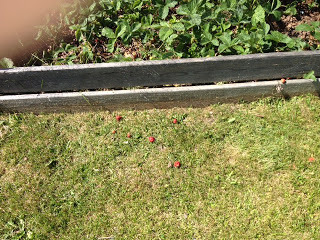
Oh yes, this is a true story. I must add that assurance, because when I talked with readers at the Vermont History Expo yesterday, we walked carefully along the borders of What Really Happened and how to craft fiction that reflects actual events, not the ones we wish had happened.
"To have peace, we must have justice. To have justice, we must have truth." These are the stories that matter.
Published on June 18, 2012 13:01
May 18, 2012
Slavery: Talking About It With Younger Students
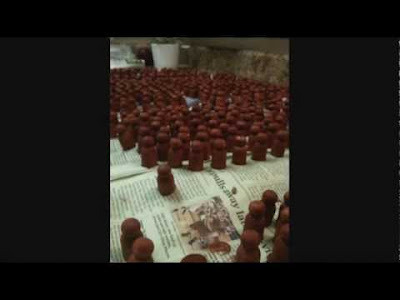 Why didn't I think about it ahead of time? I guess it never occurred to me that I'd be trying to explain what American Slavery had been to people who had no clue -- I've talked about THE SECRET ROOM (my 2011 Vermont adventure novel, history-hinged) with middle schoolers and high schoolers and lots of adults. But the day I found myself conversing with an audience that included children in third grade, I realized that I couldn't explain the Underground Railroad to them -- the focal point of Shawna and Thea's investigations in The Secret Room -- without saying something about what slavery was.
Why didn't I think about it ahead of time? I guess it never occurred to me that I'd be trying to explain what American Slavery had been to people who had no clue -- I've talked about THE SECRET ROOM (my 2011 Vermont adventure novel, history-hinged) with middle schoolers and high schoolers and lots of adults. But the day I found myself conversing with an audience that included children in third grade, I realized that I couldn't explain the Underground Railroad to them -- the focal point of Shawna and Thea's investigations in The Secret Room -- without saying something about what slavery was.And it occurred to me that some of these kids didn't know.
What would their parents say about the words and images I chose to present?
Not until that moment had I realized how hidden our American history can be. Moreover, I realized that explanations of American Slavery could wound the children gazing at me. One, the entire phenomenon could be a frightening nightmare to them. And it ought to be, although I didn't want these children waking with night terrors. The idea that humans could "own" other humans and treat them as if they were farm animals is horrifying, terrifying, shameful.
I worried, too, that because the group of children in front of me included a wide range of skin colors, any bullies in the group could use my narrative of slavery to justify mistreating other children. Or, the very imaginative ones could experience within themselves a shadow of what slavery did.
In some ways, I wish I'd recorded the words I chose that day, so I could reexamine them and improve them for the next child who asks me about it. As a novelist, I'm in almost the same situation that Harriet Beecher Stowe experienced when she realized she was going to write Uncle Tom's Cabin: No matter how many histories and memories I read (and I strongly recommend Julius Lester's To Be a Slave as a starting point for teachers and other readers, as it provides the actual words of people who experienced slavery), I'm still an outsider, looking on with shock, shame, and determination to remind people of what's happening.
What's happening -- not "what happened." Because my conviction is that American Slavery continues to mark us all, and to make us responsible for our actions today.
So I'm especially glad today to share the news that a parent of a seven-year-old who heard how clearly her child failed to grasp the tragedy of the Middle Passage and American Slavery has created a "game" to teach some of the the emotional underpinning in a way that children and adults can grasp. The parent is game designer Brenda Brathwaite, and I hope you'll click here to listen to her TED talk about why this was a MUST DO game for her, and how she and her daughter explored its impact together.
Then share the news. Please.
PS - If YOU have experience talking with students about American Slavery and want to share some wisdom -- or are a parent with ideas about this -- I'd love your comments.
Published on May 18, 2012 10:07
May 3, 2012
Another Direction for Research
When I was writing The Darkness Under the Water, I knew I was writing as a relative newcomer to Vermont: I'd only lived here about 25 years when I began writing it, 30 years when it reached publication. Although my mother's family has long, complicated roots in New England, I'd always thought it was just a very weird coincidence that the house I first rented in Irasburg, Vermont, was built and lived in by a distant relative. I wrote from the point of view of someone who's adopted a place as home: wholeheartedly in love, but with distance that could never be mended. It was a good "place" of heart to write from, and it helped me to identify deeply with Molly Ballou, the novel's protagonist: Her heritage is about to slip from her grasp, and she doesn't know how she feels about that -- but events are moving her to the point of making a choice. Actually that's also a mirror of what happened to my dad, who arrived in America as an educated but deeply displaced German/Jewish/English immigrant a few years after the end of World War II. I identify with both of my parents, odd though that may sound.
As I researched and wrote The Secret Room , set in the fictional village of North Upton, I modeled the location on the real village of North Upton. Since I knew almost none of the residents, I could safely use my imagination to create the story and characters ... but my research also relied on books about the families who really did live there for generations, and whose members still "belong" in North Danville, whether they still live there, or not.
Gradually, I began to realize that the family names of the real village overlapped oddly with my mother's background. Moved by the coincidences, and also by some of the controversy over my first novel (who was I?), I began a genealogical journey. Just after I completed the manuscript of The Secret Room, I realized -- with earthquake-level shock -- that one of my ten-great grandfathers was a nine-great grandfather of Mary Langmaid Prior, a much-missed deceased friend whose affection and appreciation for her North Danville roots had pushed me toward my choice of the village to inspire the novel. Suddenly my life was part of my fiction. Omigosh!
Since then, I've discovered that my fairly isolated parents actually had cousins all over America, but may not have known it, or may have deliberately steered away from family. Both my mother and father have now passed on, so I'll never know for sure. But I'm now dedicated to knowing more, and I continue the family history research. This evening one of my brothers phoned -- about to exchange e-mails with a cousin of our dad, who lives within an easy drive of his home. For the first time.
So I'm a fan of all research tools that give us options to learn more, especially of our American history, which is so complex and many-layered. This week, Ancestry.com, one of the big databases for this kind of information, announced a new DNA project that will let participants find out concretely more of their biological connections to the world's people. I'm looking forward to taking the test some day. What else will I discover? I already know some of the Native American branches of my family tree, new knowledge that has me awestruck. I hope to reach my own African roots someday -- deep in the heart of our world. Knowledge can make our hearts ache. And rejoice.
As I researched and wrote The Secret Room , set in the fictional village of North Upton, I modeled the location on the real village of North Upton. Since I knew almost none of the residents, I could safely use my imagination to create the story and characters ... but my research also relied on books about the families who really did live there for generations, and whose members still "belong" in North Danville, whether they still live there, or not.
Gradually, I began to realize that the family names of the real village overlapped oddly with my mother's background. Moved by the coincidences, and also by some of the controversy over my first novel (who was I?), I began a genealogical journey. Just after I completed the manuscript of The Secret Room, I realized -- with earthquake-level shock -- that one of my ten-great grandfathers was a nine-great grandfather of Mary Langmaid Prior, a much-missed deceased friend whose affection and appreciation for her North Danville roots had pushed me toward my choice of the village to inspire the novel. Suddenly my life was part of my fiction. Omigosh!
Since then, I've discovered that my fairly isolated parents actually had cousins all over America, but may not have known it, or may have deliberately steered away from family. Both my mother and father have now passed on, so I'll never know for sure. But I'm now dedicated to knowing more, and I continue the family history research. This evening one of my brothers phoned -- about to exchange e-mails with a cousin of our dad, who lives within an easy drive of his home. For the first time.
So I'm a fan of all research tools that give us options to learn more, especially of our American history, which is so complex and many-layered. This week, Ancestry.com, one of the big databases for this kind of information, announced a new DNA project that will let participants find out concretely more of their biological connections to the world's people. I'm looking forward to taking the test some day. What else will I discover? I already know some of the Native American branches of my family tree, new knowledge that has me awestruck. I hope to reach my own African roots someday -- deep in the heart of our world. Knowledge can make our hearts ache. And rejoice.
Published on May 03, 2012 18:44
Seven Homes, Seven Stories - in One Building
In the earliest research for ALL THAT GLITTERS (in progress on Wattpad - click here), I focused on two buildings in Montpelier, Vermont: the gem-like glittering State House on State Street, and the mysterious structure called The Blanchard Block, where Bear Pond Books nestles in one lower Main Street corner. I've fallen in love with the labyrinth of corridors, offices, and purposes within this historic downtown commercial building that also served the town as its Opera House. It really is true that elephants climbed the stairs to the second-floor performance hall, although today there are no signs of their presence (not even a whiff of pachyderm pee).
As you look at the photo that I snapped earlier this week, see the ground-floor doorway with the pale yellow trim? That's the one that teen detective Felicity "Lucky" Franklin enters with her girlfriends, as she races to see whether her mother might be in the family's apartment. In my mind's eye, that apartment is on the second floor, at the rear, in the 1890 addition, where one of my most informative research guides downtown once resided (more on that, later). You need to know that it's possible to reach the roof of the structure. Keep that in mind, as Lucky finds, once again, a bit of birdseed, in spite of the snowy surroundings. What a quandary!
About the title of this post: Lucky's home isn't the only one in this large, elegant structure. Each of the others here has a "story" too. But I also like to count on another number line: over time. Since 1833-1834, when the building was born, I figure there have been at least seven important stories unfurling here. Lucky Franklin's is the eighth.
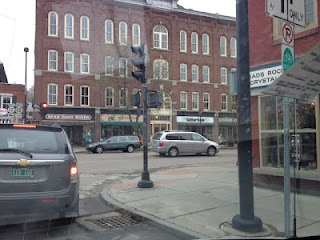

As you look at the photo that I snapped earlier this week, see the ground-floor doorway with the pale yellow trim? That's the one that teen detective Felicity "Lucky" Franklin enters with her girlfriends, as she races to see whether her mother might be in the family's apartment. In my mind's eye, that apartment is on the second floor, at the rear, in the 1890 addition, where one of my most informative research guides downtown once resided (more on that, later). You need to know that it's possible to reach the roof of the structure. Keep that in mind, as Lucky finds, once again, a bit of birdseed, in spite of the snowy surroundings. What a quandary!
About the title of this post: Lucky's home isn't the only one in this large, elegant structure. Each of the others here has a "story" too. But I also like to count on another number line: over time. Since 1833-1834, when the building was born, I figure there have been at least seven important stories unfurling here. Lucky Franklin's is the eighth.

Published on May 03, 2012 18:18
May 2, 2012
"Books Over Breakfast," Cameras and All!
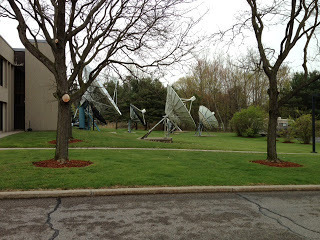 Antennas at WCAX, South Burlington, VT.The wonderful part of being interviewed on TV at five minutes to seven in the morning is -- there's no time to get nervous! You get up (or I did) at 4 a.m. (a bit challenging for a writer/editor who often is up later than midnight, scribbling or doing research). You drive for almost two hours from the Northeast Kingdom to South Burlington. You take a deep breath and walk into the studio -- and if you're me, you're then fascinated by everything going on: the sets, the robotically moving cameras, Sharon in her headset working all the scenes together, the real people named Molly and Keagan and Gary who until that moment only existed on your home television screen.
Antennas at WCAX, South Burlington, VT.The wonderful part of being interviewed on TV at five minutes to seven in the morning is -- there's no time to get nervous! You get up (or I did) at 4 a.m. (a bit challenging for a writer/editor who often is up later than midnight, scribbling or doing research). You drive for almost two hours from the Northeast Kingdom to South Burlington. You take a deep breath and walk into the studio -- and if you're me, you're then fascinated by everything going on: the sets, the robotically moving cameras, Sharon in her headset working all the scenes together, the real people named Molly and Keagan and Gary who until that moment only existed on your home television screen.And suddenly you're in the chair on one of the sets, happily saying to Keagan -- who has kindly said "Just look at me, not the cameras, they'll be moving around" -- some of the things about The Secret Room that will always excite and intrigue even the writer, who got to know the characters as they slipped out of their houses onto the autumn scene and opened up secrets in their village.
Three minutes flew past; Keagan generously saved time at the end to share news about the OTHER novel, which is to say, the one that's getting written in public, a chapter every three days or so, All That Glitters (see right-hand column). And then, poof, it was over, and my whole day was ahead of me. (Click HERE for the TV segment!)
So I stopped in Montpelier to take a few photos of some of the buildings that have important roles in the chase and investigation chapters now unfolding. Here they are: (1) the Blanchard Block, home to the very real Bear Pond Books and the fictional apartment of teen detective Felicity "Lucky" Franklin and her family; (2) a building once nicknamed Redstone, I think, that sits across from the State House; (3) a building made of actual "redstone," standing across from the Pavilion Building (once upon a time the Pavilion Hotel); and (4) the State House itself. Now all you need to do is imagine these in an early and fierce winter storm in the week before Thanksgiving. Lucky's feet are freezing, and when she slipped in the dark, her glove landed in ... birdseed. Birdseed? Well, it was under the snow ... a little ways under. More on that, in the next chapter.
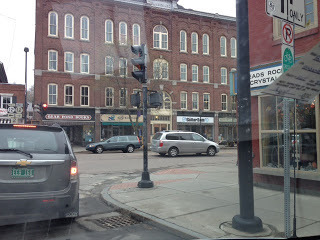
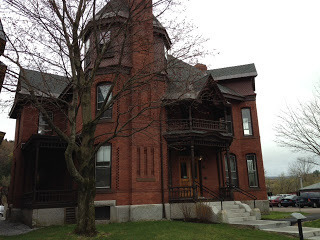
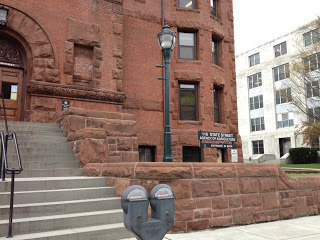
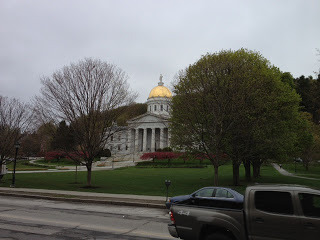
Published on May 02, 2012 09:46



